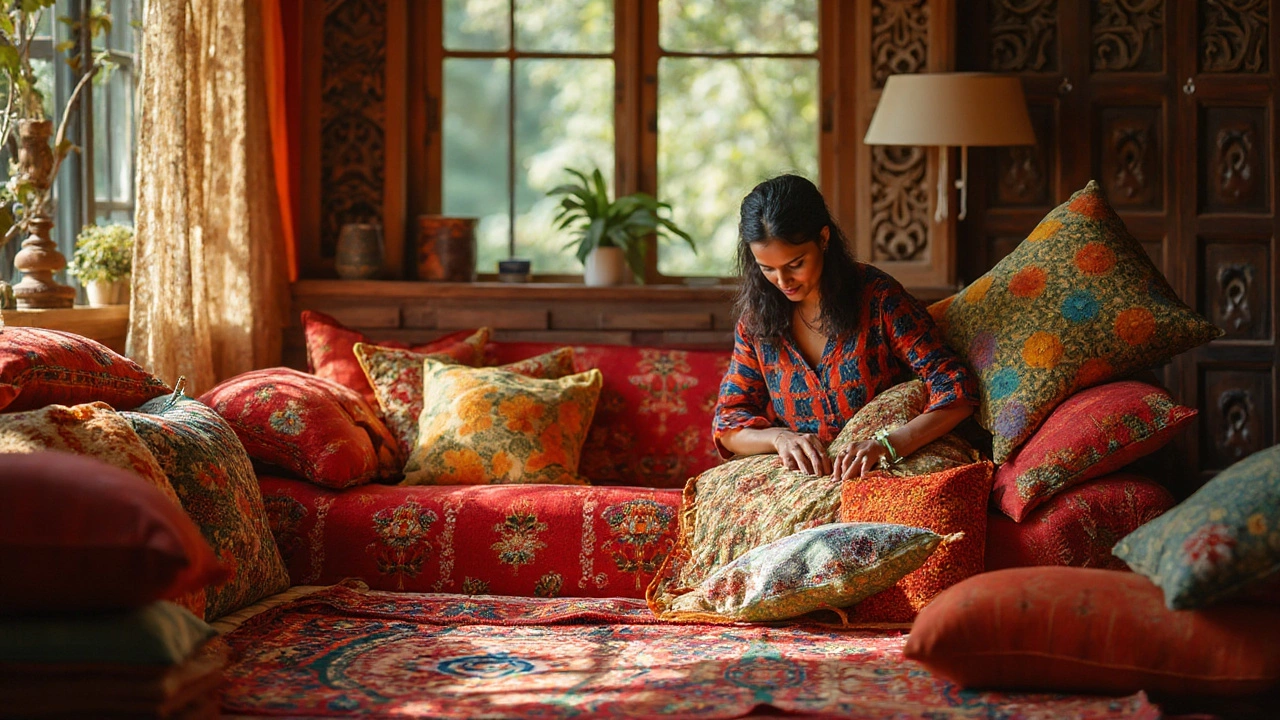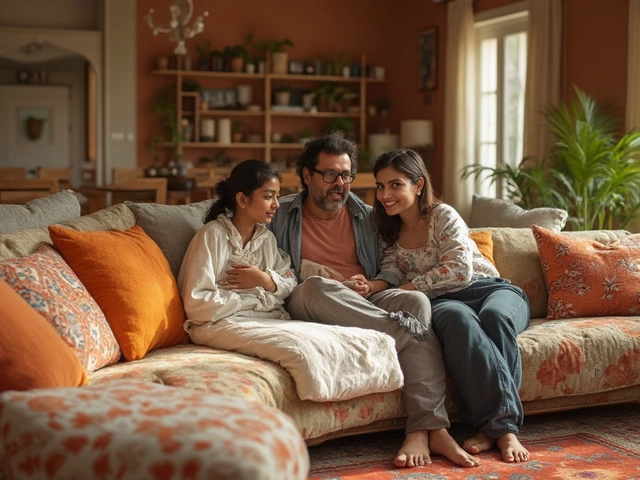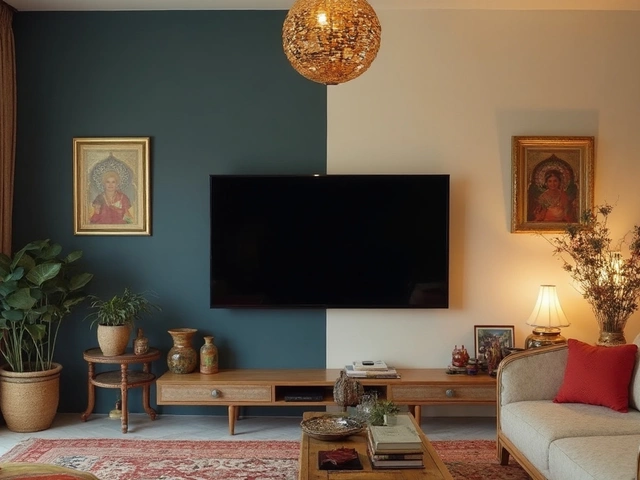You ever notice how a few cushions can turn a kind-of boring sofa into something that actually looks inviting? There’s almost an unspoken power to a well-styled scatter cushion arrangement. Yet, sometimes it looks amazing, sometimes it’s a mess, and you’re left wondering if you missed some secret rulebook. Truth is, there’s a method to the madness, even if most people never talk about the real tricks behind picking, placing, and balancing cushions the right way. Pulling off the perfect scatter is not about copying hotel lobbies. It’s about using a few easy-to-follow rules to bring out your own style—and not make your lounge look like a furniture store showroom either. Ready to learn the real deal?
The Core Rules of Scatter Cushion Placement
The right number of scatter cushions can make or break a space. Most designers will tell you: the odd numbers win every time, especially three or five. Too many cushions, and your couch turns into a fortress that swallows people whole. Too few, and things just look…forgotten. The golden ratio here isn’t a hard number—it's about balancing chaos and style. Three cushions on a small sofa or armchair feels natural; five works for a standard couch. And if you’re blessed with a huge sectional, seven or even nine can actually look great, as long as they’re arranged thoughtfully. Odd numbers kind of trick the eye: they avoid that stiff, too-symmetrical look.
Size matters, too. Think of cushions like toppings on a pizza—mixing textures and sizes is the tasty way to do it. The biggest should sit at the back, forming your foundation. Stack medium and smaller ones in front, almost cascading forward. Don’t just go for 45cm squares—the classic size. Throw in a couple of lumbar (rectangular) cushions, or smaller squares at 35cm, and you get the sort of layered look that feels casually stylish. Velvet, linen, chunky weave—they all give something extra visually, so don’t pick matching sets or it’ll look flat. I saw a sofa styled with just three lush, oversized velvet cushions and two nubbly, tiny ones, and it looked like something from a high-end magazine spread, but with zero ‘try-hard’ vibes.
Spacing is key. Leave a little breathing room between cushions, and don’t line them up like soldiers. An angled placement (not quite straight) looks more inviting. Sometimes, designers will even toss a cushion on the floor nearby—on purpose—just to say, “see, we chill here.” The goal is to look intentional, not uptight.
Don’t fall for the mistake of pushing all cushions to the ends of the couch, squeezing yourself into the middle with nothing. That old-school look makes everything feel rigid and formal. Try clustering a trio on one side, leaving the other side with just one. If you’re working with a corner sofa, angle your arrangement from the deepest corner outwards—makes the whole setup look cozy, not corporate.
Last classic rule is about mixing up the covers. A lot of folks assume everything has to match. Truth is, mismatched covers in complementary hues look a lot more liveable. Aim for a loose palette—two or three main colors, repeating in different ways across the scatter. Don’t worry about getting it perfect—imperfection looks intentional when you follow these rules.
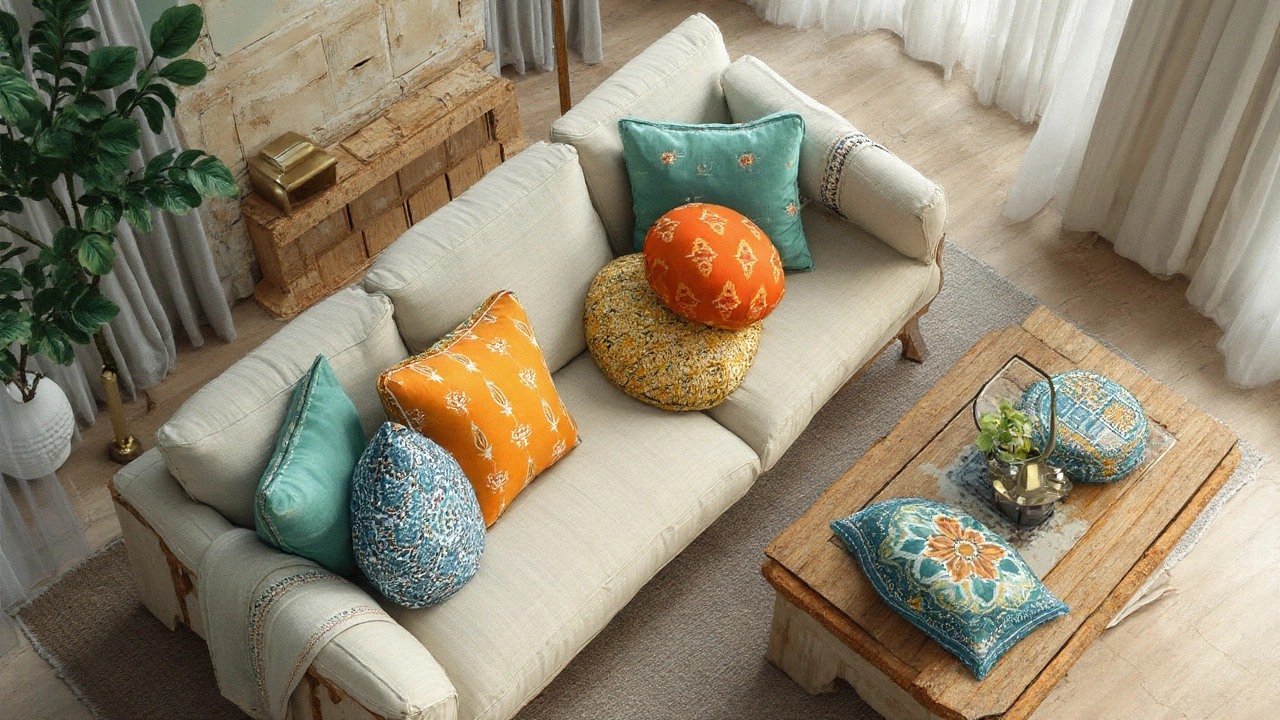
Color, Pattern, and Texture: The Secret Sauce
This is where play happens. Cushions are the easiest way to experiment with bold colors and wild patterns, since you can swap them seasonally or whenever you’re bored. Designers swear by the “60-30-10” color rule. Basically, pick one main color for about 60% of your cushions—probably reflecting the walls, curtains, or your sofa itself. Layer in a secondary shade across another 30%, and keep the last 10% for a wild card—something that pops, like an acid yellow velvet or a zingy blue, even if it’s just a thin piping trim.
Patterns are surprisingly easy when you know one trick: pair one big, bold design (like botanicals or modern geometrics) with a couple of subtler ones (maybe stripes or dots), then anchor it all with a solid. For those with a flair for drama, animal prints—especially the smaller, busier types—are way less risky than you’d think when just used in a cushion or two. If your sofa is neutral, this is your chance to go wild. If the rest of your room has a lot going on, pull back with more muted, textured cushions instead—think slubby linen, raw cotton, faux fur, or nubbly bouclé.
Texture matters as much as color. Mixing velvet, chunky knits, and smooth linen gives an incredibly tactile quality. In fact, a study by the University of Surrey in 2022 found that people instinctively rate rooms with ‘multi-textured’ scatter cushions as warmer and more comfortable, even if they don’t consciously notice why. And if you grab a cushion and squeeze it, you want it to have enough squish—so feather pads beat thin foam every time.
If you ever feel stuck, see what’s happening outside your windows. Pull colors or textures from nature—a green that matches houseplants, a blue like the sky, or earthy ochre that pops up in your garden in spring. People don’t get sick of nature-inspired palettes nearly as quickly, and the cushions seem to just ‘click’ with the rest of the space.
A sneaky tip from high-end retail displays? Use a single statement cushion—say, one with a metallic thread or a neon accent—and surround it with plain, quietly textural ones. Your eye will immediately lock on, making the whole arrangement appear intentional and styled.
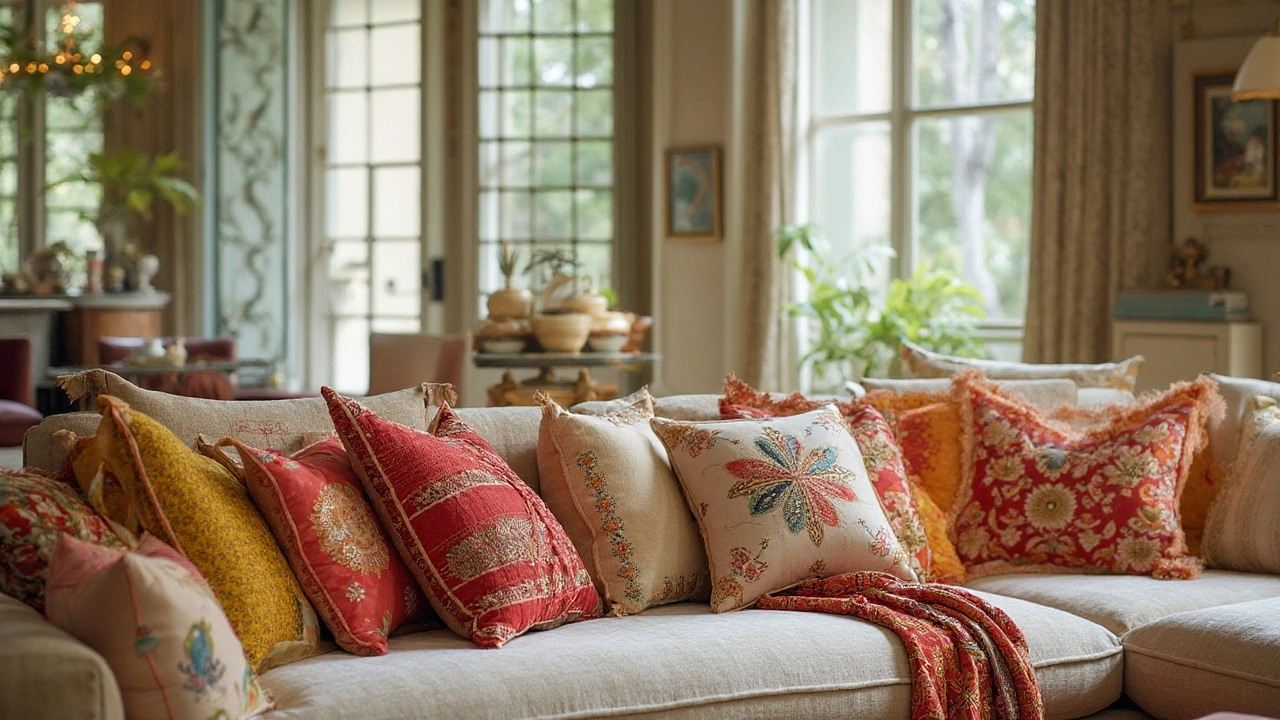
Dos and Don’ts, Plus Styling Hacks for Every Room
So what should you absolutely avoid with scatter cushions (besides drowning your guests)? First, say no to stiff matching sets straight from the box. They’re easy, but within a month, you’ll be bored and your room will feel catalog-perfect in a way nobody loves. It’s like buying art that comes with the frame—never as personal as mixing things up yourself. Pick covers you want to touch. If you wouldn’t want to lie on it during a lazy Sunday, it’s the wrong cushion.
Swap and switch cushion covers seasonally. Lightweight cotton or linen looks cool and fresh most of the year, but come autumn you can bring in plush velvets, quilted fabrics, or even wool blends for warmth and a quick nest-upgrade. This is a cheap way to get a whole new vibe every few months. Just tuck your out-of-season covers in a pillowcase and store them flat—less bulk, less dust.
When you’re arranging in different rooms, think about the sofa’s job. For a living room, use more cushions at the ends, since that’s where people usually sit. In a bedroom, cushions perched in front of the pillows can feel overdone—aim for just two or three, different sizes, and let one drape off-center for a relaxed, thrown-together look. On a bench, a single long lumbar cushion usually looks modern and sharp, or go for two mismatched squares side-by-side.
The cover fabric should fit the space, too. Got kids or pets? Look for zipped covers so you can toss them in the wash, and go for dark shades or forgiving patterns that won’t show every paw print. If allergies are a thing in your house, skip feathers and opt for hypoallergenic synthetic inserts. And if the idea of ‘designer’ cushions makes you roll your eyes, remember: many pros hit up IKEA or even supermarkets for base cushions, then splash out on just two or three eye-catching covers from fancier spots. No one will notice if half your scatter cushion lineup is under £10—as long as you mix it up.
Another little hack: ‘karate chop’ the top of your square cushions. Give them a firm whack in the center, and they’ll form a crease that makes even a new cushion look relaxed and inviting—not like it’s trying to look perfect. This is a trade secret for shoots and open houses everywhere.
So, the real rule for scatter cushions? There’s no single rule. Balance your numbers and sizes, mix up your colors and textures, and tweak things every once in a while so your space always feels fresh. The point is never about showing off, or matching some image you saw online. It’s about making your space feel just right for flopping down at the end of a day. Cushions are there to catch you, and with these easy rules under your belt, you’ll never look at a naked sofa the same way again.
